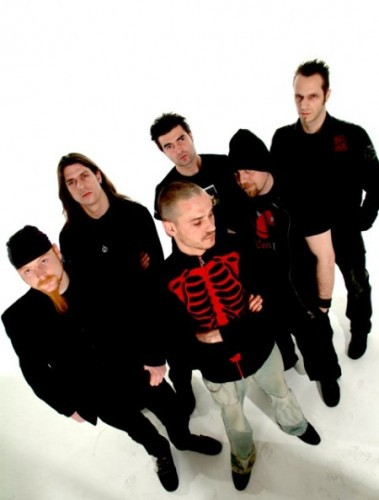
NCS contributor Andy Synn returns with yet another retrospective. This time the subject is Oceans of Sadness from Belgium.
Unfortunately, this edition of The Synn Report is a posthumous one, as Oceans Of Sadness recently announced their split. I had originally intended to write something about this band at a later date, hoping that they would have a new release by then as their last album (their sixth) was released way back in 2008.
Sadly, these Belgian visionaries have made the decision to part ways, leaving behind them six full-length albums of darkly romantic, proggy metal whose lack of boundaries makes their sound both fascinating and at the same time difficult to classify in its entirety. As such I’m giving each album its own recommendation separately this time around. Quick warning: the band relies primarily on clean vocals accented by some death metal growls and black metal shrieks, not the other way around!
To my mind there are (broadly speaking) two forms of progressive music, linear progressive music and spherical progressive music. The former usually involves bands moving in a linear direction away from their original forms, growing and evolving along the way, often to a point where their sound and style are totally different from that of their earliest releases. The latter involves a band carving out a sound with a large potential scope based on a central point of consistency – this allows the band to experiment within this sphere (which varies in size and scope depending upon genre limitations, technical and compositional skills, etc) whilst maintaining a core sound.
Neither of these forms is entirely mutually exclusive, as bands who have mined their sonic sphere of all possibilities can be seen to break out onto a linear path in response, just as bands who have made a career out of linear growth can eventually find a sphere to inhabit in which they are most happy to exist. (more after the jump, including songs . . .)
Oceans Of Sadness demonstrated elements of both these approaches during their career, as whilst their earlier albums hinged on a basic foundation of gothic and black metal, over time their sound mutated into a singular amalgamation incorporating further influences from post-metal, death metal, prog-rock, grunge, folk and classical music. Towards the end of their career it seemed that they had finally carved themselves a particular niche and found a sphere which, given further time, they may yet have explored even more deeply and made even more their own. Alas, this was not to be.
Between Heaven, Earth and Beauty – 1998
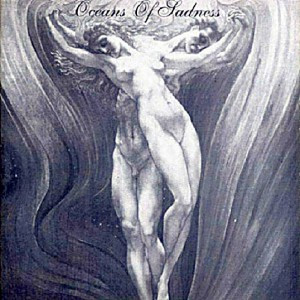 This album began OOS’ career as a gothic, romantic metal outfit similar in vein to My Dying Bride, opening with a short semi-instrumental opener, heavy on the keyboards, light on the vocals and other instrumentation, which segues into the sound of wind and rain and a faintly beating heart during the opening of “Together Yet Alone”. A slow, gothic number, this features relatively simple guitar work and some leading keys which augment the sound with embellishments of piano and organ. The keyboard solo is a nice surprise and offers a more upbeat change of pace from the rest of the song, whilst the drums display some more of the bite and intricacy that is somewhat lacking in the guitars.
This album began OOS’ career as a gothic, romantic metal outfit similar in vein to My Dying Bride, opening with a short semi-instrumental opener, heavy on the keyboards, light on the vocals and other instrumentation, which segues into the sound of wind and rain and a faintly beating heart during the opening of “Together Yet Alone”. A slow, gothic number, this features relatively simple guitar work and some leading keys which augment the sound with embellishments of piano and organ. The keyboard solo is a nice surprise and offers a more upbeat change of pace from the rest of the song, whilst the drums display some more of the bite and intricacy that is somewhat lacking in the guitars.
The vocals are a little weak and strained on this first album when compared with their subsequent catalogue, primarily sticking to a strained, angsty croon along with a few dalliances with heavier, screamed and roared vocal arrangements. The keys are a prominent element, adding a sense of shimmering light to accent the driving drums of “The Last Stage” whilst conjuring a darker, more bleak atmosphere on “My Own Private Angel”. “The King Of Nevermore” showcases a more interesting side to the band’s guitar work, some heavier, more distinctive riffing making a welcome change to the more standardised chord progressions which make up the majority of the album’s guitar work, as well as incorporating a welcome lead break near the song’s heavier, screamier conclusion.
Closer “Candles” has a slightly more black metal feel to it at times, particularly in the semi-symphonic keys and the harsh screams which appear mid-way through the song. Whilst at times the song flirts with a sense of understated, not quite realised heaviness, it also manages to foreshadow some of the band’s future endeavours and willingness to experiment, closing as it does with a thumping display of off-kilter drumming and a strange, almost jazzy melody played out on a lone piano.
Sample Song: The King of Nevermore
Recommended For Fans Of: early Katatonia, My Dying Bride
For We Are – 2000
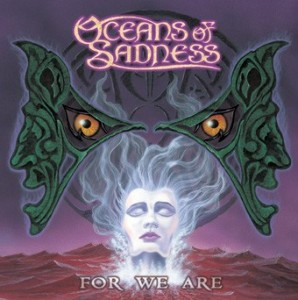 Wearing the most overtly “symphonic black metal” influences in OOS’s back catalogue like a badge of (some would say dubious) honour, their sophomore release ups the aggression and overall “metalness” from their debut quite distinctly.
Wearing the most overtly “symphonic black metal” influences in OOS’s back catalogue like a badge of (some would say dubious) honour, their sophomore release ups the aggression and overall “metalness” from their debut quite distinctly.
After a throw-away introductory track the album really begins with “For When You Sleep, My Love”, an assured combination of symphonic keys and sharp-edged riffs which effortlessly expands the dark romanticism of their debut into more direct, aggressive spheres. The doomy nature of their debut continues to infect the album’s mood as a whole, be it in the long, melancholic openings of “A Dying Nightingale” (which eventually explodes into a heavier, darker piece of melodic black metal) or “Low” (which incorporates a wide variety of synthetic string textures over its weaving bass lines and chugging riffs), or in the tortured vocal hues which balance out the emotional spectrums of heavier songs such as “Re-Erase” and “Your Faith”.
Showcasing their willingness to experiment and push their sound in new directions right from the start of their career, songs like “Again The Wolf Wins” and “The Apocalypse” employ the quiet-loud dynamic and the technical skill of top-notch melodic black metal as tools by which to explore non-standard song structures and push the more extreme metal aspects of the bands’ sound further, thus distancing themselves and progressing from their initial beginnings as a more simply gothic metal act.
This new-found love for more extreme vocal styles and speeds is tempered by the continued use of slow, moody piano pieces (“When We Become One”, the outro to album closer “Judas”, etc) and the earnest, often emotionally fragile vocal performance which gives each song a touch of human weakness. The riffs are noticeably more complicated and aggressively played, stabbing and thrusting with youthful vigour and allowing the band to expand their compositional and emotional palettes, as well as explore more intricate musical arrangements and technically challenging individual performances.
Sample Song: A Dying Nightingale
Recommended For Fans Of: early Rotting Christ, Dissection
Laughing Tears, Crying Smile – 2002
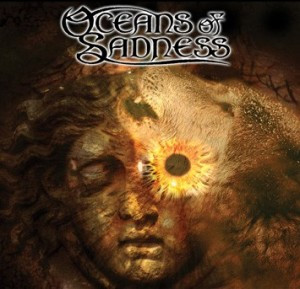 Opener “Sinner’s Dream” has an almost 80’s vibe to many of its guitar melodies, broken up by the heavy-hitting drumming of Guy Vernelen. A defiantly heavy opening song, the track shifts direction suddenly midway through, bringing in the more gothic atmosphere of their first album through the use of neo-classical string arrangements and morose, reverberating vocal melodies.
Opener “Sinner’s Dream” has an almost 80’s vibe to many of its guitar melodies, broken up by the heavy-hitting drumming of Guy Vernelen. A defiantly heavy opening song, the track shifts direction suddenly midway through, bringing in the more gothic atmosphere of their first album through the use of neo-classical string arrangements and morose, reverberating vocal melodies.
These romantic sensibilities continue through into “So Close” and “One Entire Shield Of Pain”, with plaintive, emotive vocals wavering over deeper, crunchier guitars and faintly classical themes being maintained by the ever-present weaving keyboard lines. The twin-lead melody introduced three-quarters of the way through “So Close” gives the music a nice shot of adrenaline and allows the track to finish strong with some vibrant and energetic playing, while “One Entire Shield Of Pain” blends black metal style screams with a more balladic, restrained delivery of clean piano and guitar work.
The black metal influences from “For We Are” are still prevalent in several of the album’s tracks, as both “From The Seed To The Flower” and “Help Me” are haunted by the ghost of Dissection, mixing a heavier, anthemic take on black metal with up-temp, rockier moments, characterised by some sharp stabs of Bodom-esque keyboards and baroque synthesised strings which give the tracks a slightly more classical sheen. “Accepting Our Weakness” is a purely keyboard- and vocal-led track, serving as a calm and reflective interlude between the more riff-heavy material which precedes and follows it. “We Are Alone” is one such track, beginning with a series of bleakly melodic riffs, with a crunchy and tasty sense of rhythm and lead interplay, before breaking down into a series of trade-offs between leading vocal, guitar and keyboard refrains
“Schizophrenia” is one of the more stereotypically progressive tracks on offer, going from a drawn-out, ballad-esque introduction into a series of driving, ascending tremolo runs, thick low-end riffs and nimbly dancing piano work, before climaxing in a strange section of female spoken-word vocals, clean piano work and soaring lead guitar. Its counterpart is “Shadows”, a more grandiose and (let’s face it) borderline-cheesy take on the goth romanticism which has infected much of their work so far. The clean vocals in particular are somewhat over-wrought on this track and would have benefitted from a little more restraint.
Closer “Try To See” is another riff-centric number, its rockier riffs tempered by a greater black metal feel and some cleverly employed twin-lead harmonies. The high, droning synths provide a thread of continuity with the rest of the album, whilst the vocals are delivered with more power and conviction than on perhaps any other track. The juxtaposition of harsh vocals against the more dominant cleans is more tastefully done, and the piano work is of particular quality throughout, accenting but not overwhelming the rest of the instruments.
Sample Song: Schizophrenia
Recommended For Fans Of: Children Of Bodom, Evergrey
Send In The Clowns – 2004
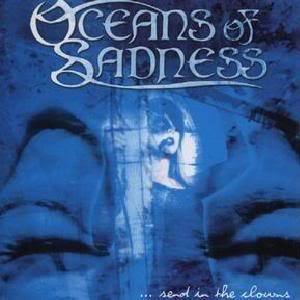 First track proper “Who’s In Control” comes across as a surprisingly playful cross between the uplifting melancholy of Finnish melodic death metal and the more considered, restrained style of progressive Norwegian black metal. Flitting back and forth between harsh and clean vocals, the song displays a keen disregard for convention and propriety, managing to incorporate catchy repetition into an almost linear narrative without becoming predictable or derivative of itself.
First track proper “Who’s In Control” comes across as a surprisingly playful cross between the uplifting melancholy of Finnish melodic death metal and the more considered, restrained style of progressive Norwegian black metal. Flitting back and forth between harsh and clean vocals, the song displays a keen disregard for convention and propriety, managing to incorporate catchy repetition into an almost linear narrative without becoming predictable or derivative of itself.
Follow-up “Wild Mystery” wields some moments of terrifically heavy death metal bludgeoning, as well as a suitably wild and prominent lead melody near its conclusion, and “Two Voices” betrays the bands black metal roots a little more, with its employment of screeching, scathing high vocals at key moments as well as its generally aggressive and fast pacing, but also finds time for some full-on lead guitar shredding before descending into a more concussive death metal groove.
This cross-over of progressively inclined melodic death metal and melodic black metal continues throughout the record, conceptually bound together into a coherent-part sequence by three short instrumental tracks which incorporate distorted keyboard loops and odd, repetitive samples to tie the record together as a singular piece.
The second third of the record brings the keyboards more to the fore than on the more metallic openers, making their presence far more notable throughout (not least on the soaring synthesised strings and complex piano work of “Eyes Like Fire”). There also seems to be more consideration given to the bass lines at this point, “Where Oceans Begin” in particular benefitting from a clear, rumbling bass tone and some bouncing, nimble playing which offsets the more abstract synth work quite nicely, grounding the metallic low end of the band so that they can explore some more obscure and unusual melodic textures and riff arrangements. Folky melodic instrumental “Ode To The Past” provides a smooth segue into the more aggressive death metal of “Precious Gold”, replete with sharp keyboard stabs and relentless double-kick drumming, which is perhaps the album’s best cut.
After one last minimalist instrumental interlude, the album concludes with a trio of songs which maintain the prominent keyboard presence of the album. “See The Angels” is a mid-paced, grooving number with an acoustic, folk-led introduction and a series of traditional melodic lead parts scattered throughout its length, whilst “You’ve Slain” is a more energetic, overtly metallic number, with a greater incidence of harsh vocals and some Dream Theater-esque keyboard and lead guitar interplay. Towards the song’s conclusion, the lead guitar is allowed to really cut loose with some edgy, distorted shredding, segueing seamlessly into a speedy, blues-inflected outro solo. Final track “Hope Is Gone” is progressively-minded death metal through and through, building from an ominous sequence of stabbing piano chords over a deep, menacing bass line into a steady, driving torrent of chugging riffs and harshly screamed vocals, before breaking into a high, scalding black metal assault, broken up by moments of proggy rhythmic variety.
Sample Song: Precious Gold
Recommended For Fans Of: Edge Of Sanity, Sentenced
Mirror Palace – 2007
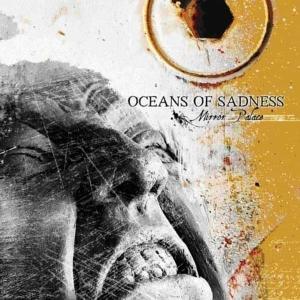 At the heart of this album lies a remarkably playful, mischievous spirit, as the band experiments stylistically with a multiplicity of influences. The band have successfully crafted an album that could appeal to a wide variety of listeners, without ever losing its internal consistency or integrity. The melancholic melodic death metal elements first introduced on Send In The Clowns have been expanded, although by contrast the subtle black metal influences from previous albums are largely absent.
At the heart of this album lies a remarkably playful, mischievous spirit, as the band experiments stylistically with a multiplicity of influences. The band have successfully crafted an album that could appeal to a wide variety of listeners, without ever losing its internal consistency or integrity. The melancholic melodic death metal elements first introduced on Send In The Clowns have been expanded, although by contrast the subtle black metal influences from previous albums are largely absent.
Those of you enamoured of the delicate yet powerful strain of post-metal exemplified by The Ocean will be pleased by the paino-heavy, progressive slant of opener “Mould”, whilst follow-up “Mirror Palace” will appeal more to those who appreciate more extreme elements, as it features a far more aggressive vocal performance and a greater focus on heavy, attacking guitar work.
The keyboards really take pride of place at key points on this album, giving the music a wider breadth of sound and a much greater sense of individual character to each song (whilst paradoxically working to tie the album together via their consistent and clever usage). On “Cruel Sacrifice” in particular, the bouncing piano adds an almost jazzy atmosphere right from the start, the song continuing to utilise prominent keyboard lines to balance the more extreme metal elements, which are steadily introduced.
Continuing this theme, songs like “Sleeping Dogs” and “Intoxicate Me” wear their melo-death influences proudly, coming across as an unholy amalgamation of Dream Theater-esque progression and the dark, energetic metal of Omnium Gatherum, but are truly bound together by prominent, fizzing keyboard effects, odd, skittering piano licks and haunting, reverberating synths which flit in and out of the mix, augmenting and adding new and different dimensions to each song.
The album is broken up into two halves by an unexpected, yet extremely welcome cover of Alice In Chains‘ classic “Them Bones”. The vocal harmonies throughout the record have all born the hallmark of Seattle’s finest, and the cover is a perfect fit for the band, who utilise their expanded line-up of instrumentation to put their own stamp onto the song, the keys providing both distinctive counter-melodies and a manic violin solo to replace the traditional guitar shredding.
The latter half of the album is an overall heavier prospect than the first, “Sheep & Shepherds” (with its more extreme mix of vocals and speedy tremolo’d riffs) and “Silence Is Gold” (with its pounding, stop-start dynamic and massive chord progressions) providing a crunchier, more ferociously metallic bite to the album’s denouement. The cleanly sung vocals and waves of psuedo-classical keyboards continue to add spice and variety to the speedy melo-death riffs, while the precise and consistent drumming assault gives each song a sense of irresistible power. Final song “I Know You Know” is a prime example of how the band’s interesting, experimental work on the keyboards provides a welcome contrast to the propulsive drumming and crushing, distorted guitars, as synthesised strings and ethereal choral effects paint a darkly theatrical backdrop to the metallic might unfurled.
Sample Song: Mirror Palace
Recommended For Fans Of: The Ocean, Omnium Gatherum
The Arrogance Of Ignorance – 2008
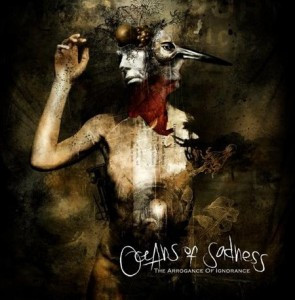 Continuing along a linear path of progression, perhaps the most obvious shift in sound that has taken place between “Mirror Palace” and “The Arrogance Of Ignorance” is the re-incorporation of some slightly more black metal elements. Added to this is the slight tweaking in compositional form that appears to have taken place, each disparate element now more carefully incorporated into a natural flow, with less of the jarring changes which at times characterised previous albums. These changes are now still unexpected and attention-grabbing, but in a manner which leaves the listener more impressed by the smooth transitions rather than shocked by the jarring switches in style.
Continuing along a linear path of progression, perhaps the most obvious shift in sound that has taken place between “Mirror Palace” and “The Arrogance Of Ignorance” is the re-incorporation of some slightly more black metal elements. Added to this is the slight tweaking in compositional form that appears to have taken place, each disparate element now more carefully incorporated into a natural flow, with less of the jarring changes which at times characterised previous albums. These changes are now still unexpected and attention-grabbing, but in a manner which leaves the listener more impressed by the smooth transitions rather than shocked by the jarring switches in style.
A common thread of progressive melody joins each song together and provides the link in artistic, if not purely musical, terms to the work of black metal luminaries Enslaved and the recent progressive excursions of Ihsahn’s solo work. The synths work as a recurring narrative thread, focusing their sound on exploring some warm, naturalistic tones of piano and organ, which also serves to give the more warbling, synthetic moments a nice feeling of originality and difference.
Songs like “Self-Fulfilling Prophecy” and “The Weakest Link” (with its carnival-esque mid-section of winding riffs and keys) up the aggression and heaviness a little more, coming across as warmer, fuller cousins to the icy majesty of Enslaved, whilst songs such as “Subconscious” (with its contrast between driving, metallic riffage and soaring female vocals) and “Some Things Seem So Easy” offer a similarly dark, yet somehow more upbeat, take on the doom-laden melancholy of Insomnium, weaving vast, sweeping swathes of melody across a wide musical canvass.
The plaintive croon of vocalist Tijs Vanneste is at its very best on this album, his distinctive baritone adding real emotional weight to each song, ably supported by his variety of powerful screams (particularly watch out for the stunningly low gutturals unleashed on “”From Then On”). The drumming is a real highlight on this album as well, powerful and punishing when necessary but also cleverly played in its intricacies and smooth shifts between different styles. Nowhere is this more obvious than on album highlight “Between The Lines”, where each riff and change in direction is given an extra lift by the dexterous and interesting playing of drummer Guy Vernelen.
The album’s heaviest song, “In The End”, features a guest vocal appearance by Hearse frontman (and ex-Arch Enemy vocalist) Johan Liiva, and balances its crushing groove with a mix of full-on Pink Floyd-ian progressive moments, whilst the album’s most energetic number is penultimate track “Failure”, which ramps up the speed a few notches from the rest of the album for the majority of its 6min+ length.
Overall, it’s a real shame the band never got to produce a follow-up to this record, but as things stand it really is a phenomenal send-off for a truly singular and individual band.
Sample Song: Between the Lines
Recommended For Fans Of: Insomnium, Enslaved

Duuuuuuuuude
Respect for the energy you’ve put into this article!
You probably thought way more about our music than we ever did
Thanks, this make us feel we did SOMETHING good at least